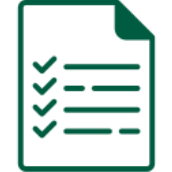This page provides an overview of the corporate social responsibility (CSR) risks related to palm oil grown in the state of Sabah in Malaysia.
Malaysia is one of the largest producers of palm oil and possesses the second largest area of plantations worldwide. As of 2015, palm oil plantations in Malaysia covered 5.64 million hectares of which 1.54 million hectares (27%) is found in Sabah.
In 2015, production of Crude Palm Oil (CPO) across the whole of Malaysia was 19.96 million tonnes. Total export of palm oil products in the same year was 25.37 million tonnes, which generated approximately 60,169 billion Malaysian Ringgit (14.32 billion USD) in export revenue.
There are three main types of palm oil farms in Malaysia:
- Private
- Smallholder
- Joint venture/state agency.
Palm oil production is regulated at both the state and federal levels. Importantly, land tenure and ownership rights are governed at the state level but licensing takes place under purview of the Malaysian Palm Oil Board (MPOB) and the Department of Environment (DOE) at the national level. Comprehensive legislation exists to regulate business, labour, human rights, indigenous rights, and the environment. However, the effectiveness of enforcement is hampered by insufficient numbers of enforcement officers, lack of cohesiveness of government monitoring agencies and corruption.
Major environmental threats from palm oil plantations are deforestation, biodiversity loss, water pollution, soil erosion, carbon emissions resulting from land use change and forest fires, and pesticide use. The biggest underlying threats are corruption and weak enforcement of the law. Indigenous rights are an area of high concern as the palm oil sector continue to encroach on indigenous land in a political environment that marginalizes indigenous communities from the benefits of development.
A number of CSR risks are present in Malaysian palm oil supply chains. The risks are wide ranging and appear across the business, social and environmental areas. If you are sourcing palm oil from Malaysia you should take care to ensure the extensive risks identified are not present in your supply chains, or have been sufficiently mitigated.
Score: 47 / 100 in 2018
Rank: 61 out of 180 countries in 2018
There are currently no armed conflicts in Malaysia according to the Council on Foreign Relations' Global Conflict Tracker.
According to the Uppsala Conflict Data Program there were 71 deaths from 2010-2017.
950,588 hectares of palm oil farms are certified by the Roundtable on Sustainable Palm Oil (RSPO) and around 1,341,748 hectares of palm oil farms are certified by the Malaysian Palm Oil Certification (MSPO).
Information Gathering
Gather information on your supply chain
- Find out the different sources of palm oil
- Determine which source type your palm oil comes from
- Find out the main documents that can be used to indicate legality throughout the supply chain
Sources of palm oil
| Palm oil source type | Description of source type |
|---|---|
|
Government land development schemes |
Palm oil from large state estates where smallholders are leased small plots (4.0 – 5.7 hectares (ha)) then awarded them after a 10-15 repayment period. The mono-crop plots are managed for subsistence and/or commercial purposes. |
|
Large-scale private plantation |
Palm oil from large-scale private mono-crop commercial plantations from 40 ha to more than 100,000 ha on alienated land under:
These plantations are often integrated with a production mill and processing facilities. |
| Small-scale private plantation |
Palm oil from small-scale private commercial/subsistence plantations (less than 40 ha) on alienated land under:
|
Documents to indicate legality
|
|
Farm level
|
|
|
Processing, trade and transport
|
|
|
Export and customs
|
Risk Assessment
Assess the risks in your supply chain
- Find out the main environmental, social and legality risks
- Download the full risk assessment to see more detail
Main environmental, social and legality risks
|
|
Business issues
|
|
|
Conversion
|
 |
Social issues
|
|
|
Environmental issues
|
|
|
GMO
|
Risk Mitigation
Mitigate the risks in your supply chain
Learn which actions we recommended to mitigate the risks associated with the palm oil sources from Peninsular Malaysia
Mitigation recommendations
We have two tools to help you mitigate risks for Malaysian palm oil supply chains:
- The Supplier Evaluation Checklist for palm oil from Malaysia will help you identify and specify the risks in your supply chain.
- The Risk Mitigation Guide gives you a detailed overview of risks in Sabah Malaysia, and how to mitigate them.
The tools above give you the most information. Below is a summary of our recommended actions to mitigate the risks associated with the palm oil sources from Sabah Malaysia.
1. Fully map your supply chain
- Our supply chain mapping tool can help you do this.
2. Obtain and verify documents
- Land tenure and business documents
- Issue Document of Title and Register Document of Title - proof of land ownership (freehold (land held in perpetuity) or leasehold (leased land not exceeding a 99-year term)
- Malaysian Palm Oil Board (MPOB L1) License – required for the establishment and management of a palm oil plantation
- A business license and a completed a Business Registration Form (Form A) to the SSM (The Companies Commission of Malaysia (Suruhanjaya Syarikat Malaysia or SSM) - required for operating a palm oil plantation
- Written Permission to Construct a Palm Oil Mill from the Director-General of Environmental Quality
- License to occupy and operate a crude palm oil mill from the Department of Environment Malaysia (DOE)
- Records Free Prior Informed Consent and/or a participatory social impact assessment and/or was conducted and copies of negotiated agreements are available
- Evidence a dispute resolution mechanism is in place
- Tax-related documents
- Receipts for payment of sales taxes, related royalties and other required fees
- Volumes, and qualities given in sales and transport documents shall match the royalties and fees paid
- Employment-related documents
- List of registered employees
- Employment contract agreements for all employees
- Evidence of insurance (Social Security Organization (SOSCO) and Employees' Provident Fund (EPF))
- Salary payment receipts
- Policies and procedures confirming ILO Fundamental Conventions are upheld
- Health and Safety related documents
- Occupational Safety and Health (OSH) policy and procedures
- H&S Officer employee contract (required for large-scale plantations)
- Record of H&S inspection reports.
- Workplace deaths records
- Environmental documents
- An approved Environmental Impact Assessment (EIA) from the Department of Environment Malaysia (DOE) for plantations greater than 500 hectares or those planning to clear greater than 50 hectares of land
- Biodiversity surveys and High Conservation Value (HCV) assessments
- Conversation/High Conservation Value (HCV) management plans
- Historical remote sensing imagery evidence to confirm no conversion of primary forest, peatlands and HCVs post November 2005.
- Trade and transport documents
- Malaysian Palm Oil Board (MPOB L1) License
- Signed delivery order, invoice or document declaring:
- Name of seller
- Name of consignor
- Quantity or net weight
- Contractual quality specification
- Contract or invoice number or both
- Name of consignee
- Name of purchaser
- Export licensing which can be obtained with the following documents (forms 24 and 49 are required for first time application):
- Form Malaysian Palm Oil Board (MPOB) Q1 (for export)
- Customs Form K2
- Memorandum and Article of Association (M&A)
- Form 24: Information of Shareholders
- Form 49: Information of Directors, Managers and Company Secretary
3. Consult stakeholders
- Confirm land ownership with the State land registry
- Confirm valid business license to operate within the jurisdiction with the business register
- Review information on land tenure disputes and developments on indigenous and traditional peoples’ land claims:
- NGO investigations and reports (Center for Orang Asli Concerns (COAC), The Human Rights Commission of Malaysia (SUHAKAM)), Pusat Komas, Cultural Survival, Forest Peoples Programme, Global Platform of Indigenous and Community lands, http://www.schusterinstituteinvestigations.org
- Media reports (Mongabay.com, greenomics.org, red-monitor.org, eyesontheforest.org, malaysiakini.com)
- Check with indigenous communities, local communities and others to confirm that customary and / or indigenous peoples' rights are upheld and there is an absence of significant disputes
- Confirm with the Malaysian Accounting Standard Board (MASB) that the operation is up-to-date in the payment of the applicable income, profit and royalty payment taxes.
- Confirm with the Social Security Organization (SOSCO) and Employees' Provident Fund (EPF) that all valid insurances are in place. Cross-check the record of salary payment slips with receipts from EPF and SOCSO and the corresponding payment forms (Form A for EPF and Form 8A for SOCSO)
- Assess palm oil plantations' corporate CSR risk linked to publicly available information on disclosure of their operations
- Check if the EIA is formally approval; there is a list of approved EIAs on the Department of Environment (DOE) website
- Confirm the plantation is not in a protected area. Information on protected areas in Malaysia can be found in the Protected Area Master List from the Ministry of Natural Resources and Environment and/or check an older version of the list compiled by WWF-Malaysia
- Assess the risk of deforestation by examining remote sensing time-series images within your palm oil supply area
- Review information from and consult environmental/nature conservation stakeholders (Malaysian Nature Society (MNS), WWF Malaysia, Malaysian Environmental NGOs); media reports (Clean Malaysia, Mongabay.com, redd-monitor.org)
4. Carry out on-site verification
- Confirm that the palm oil plantation is within the authorised boundaries in accordance with the relevant licenses
- Confirm that the company has an occupational safety and health (OSH) management system and program and that a H&S officer position (required for large-scale plantations), training, procedures and equipment are in place
- Confirm that registration of the farm has been granted following legally prescribed processes
- Confirm that legal status of the operation or rights for conducting the established activities are not subject to court orders or other legally established decisions to cease operations.
- Confirm that the Environmental Impact Assessment was carried out and fulfils all the legal requirements and environmental controls in the field
- Confirm that management plans for protected sites, species and High Conservation Values are implemented and monitored
- Confirm that maps/remote sensing images for deforestation reflect reality
- Confirm that all workers are employed according to the regulations and required contracts
- Confirm that employees:
- Are covered by mandatory insurance policies
- Hold certificates of competence required for the function that they perform
- Are paid a salary which is officially stated by the employer according to legal requirements
- Are above the minimum age for both palm oil activities and hazardous work
- Are paid at least the legally established minimum wage
- Confirm that the company does not employ unregistered workers, either on probation, or who receive government benefits for the unemployed
- Confirm that active consultation and/or a participatory social impact assessment and/or Free Prior Informed Consent was conducted and there is a dispute-resolution mechanism in place















